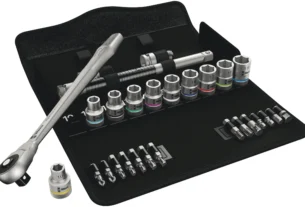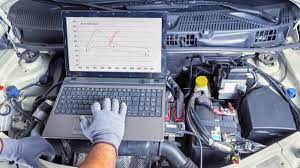Welcome to the world of wire harness design – where innovation, precision, and functionality intertwine! Have you ever wondered how complex electrical systems seamlessly operate in everything from cars to airplanes? It all comes down to what is a wire harness and the science behind wire harness design. In this blog post, we will unravel the mysteries behind this important process, deciphering what people truly mean when they talk about wire harness design. So fasten your seatbelts and get ready for an electrifying journey through the fascinating realm of wire harnesses!
Understanding the Basics: What is a Wire Harness?
What is a wire harness? A wire harness, also called a cable harness, is a meticulously organized arrangement of wires, cables, and connectors designed for efficient transmission of electrical signals and power. Functioning as the circulatory system in electronic devices, it provides organized pathways, minimizing risks like EMI, signal loss, and damage from environmental factors.
Wire harnesses are integral across various industries, ensuring effective management and distribution of electrical connections. Key components include wires of different gauges, connectors, terminals, seals, tapes, ties, and protective sheathing.
For optimal functionality and longevity, wire harness design involves a step-by-step process. Stay tuned to delve into the intricacies of creating an efficient wire harness system!
Importance and Applications of Wire Harnesses
Wire harnesses actively contribute to various industries due to their versatility and important applications. These essential components bring organization, protection, and efficiency to intricate electrical systems in multiple sectors, ranging from automobiles to aerospace.
In the automotive industry, wire harnesses play an important role in connecting diverse electrical components, such as sensors, lights, and ignition systems. They facilitate proper communication while minimizing the risk of damage or malfunctioning due to loose wires. Similarly, in aerospace, wire harness design is important for ensuring the safe and reliable operation of aircraft systems.
Beyond transportation, wire harnesses are employed in telecommunications equipment to manage cables and ensure seamless signal transmission. In industrial machinery, they streamline complex control systems.
Wire harness design not only enhances functionality but also contributes to cost-effectiveness by reducing assembly time and labor costs. Standardized designs across products improve manufacturing efficiency.
The application possibilities for wire harnesses are extensive and diverse across various industries. Their active role is not just in providing efficient connectivity but also in ensuring safety standards are met while optimizing production processes.
Key Components of Wire Harness Design
Wire harness design relies on a set of important components working seamlessly to ensure efficient signal transmission.
Wires
The core of any wire harness, these conductive pathways made of copper or aluminum carry electrical current across assembly points in various gauges.
Connectors
Serving as interfaces between wires and devices, connectors enable easy disconnection and reconnection, facilitating maintenance and repairs.
Terminals
Attached to wire ends, terminals secure connections to connectors or other components, ensuring proper conductivity and minimizing resistance or interference.
Tapes and Sleeves
Used to bundle and protect wires, these components provide insulation against environmental factors like heat, moisture, and abrasion.
Looms
Protective covers that encase multiple wires in a single flexible sheath or conduit, looms organize and manage the wiring system while guarding against hazards such as chafing or tangling.
Relays & Switches
These control devices are important in managing power distribution by regulating current flow through switches or activating/deactivating circuits based on specific conditions.
Step-by-Step Process of Wire Harness Design
Wire harness design involves a meticulous process that demands careful planning and attention to detail. Let’s take an active voice approach to the step-by-step process of wire harness design, providing you with an inside look into how these essential components come together.
Gather Requirements
Begin the wire harness design process by understanding the specific project requirements. Gather information about the electrical systems, connectors, and components that need incorporation into the harness.
Design Schematics
Once the requirements are clear, engineers create a schematic diagram outlining the connections between various wires and components. This blueprint guides the physical layout design of the wire harness.
Select Wires
Choose suitable wires to ensure optimal performance and durability. Consider factors such as current carrying capacity, temperature resistance, flexibility, and insulation material during this stage.
Choose Connectors
Select appropriate connectors by evaluating factors like compatibility with wires and other components, ease of installation, reliability, and cost-effectiveness.
Plan Routing
Plan the route for each wire within the system, considering factors such as space constraints and mechanical stress due to vibrations or movement in machinery or vehicles.
Create 3D Models
Finalize routing plans and use specialized software to create a 3D model of the complete wire harness assembly. Accurately place wires along designated paths, accounting for any bends or twists required.
Generate Manufacturing Documentation
Create detailed manufacturing drawings, including dimensions, specifications, materials lists, bill-of-materials (BOM), quantity numbers, and part references.
Develop Mechanical Fixtures & Testing Procedures
Ensure consistent quality production by creating testing fixtures. Implement procedures to check continuity, insulation resistance, and functionality before finalizing the design.
Initiate Production & Assembly
After thorough testing and verification to meet standards, begin production by assembling all necessary wiring, connectors, terminals, protective covers, sheathing, looms, and wraps. Finally, secure everything together into a single, well-organized unit.
Conduct Quality Control
Every wire harness undergoes rigorous quality control measures to ensure compliance with standards and specifications. This involves thorough inspections and testing procedures to guarantee the reliability and functionality of the final product.
Common Challenges Faced in Wire Harness Design
Designing a wire harness presents various challenges that demand careful consideration and problem-solving throughout the process. These challenges include:
- Proper Wire Routing and Placement:
- Challenge: Determining the optimal route for each wire while considering space limitations, thermal management, and electromagnetic interference.
- Solution: Meticulous planning and coordination to avoid potential issues, ensuring efficient signal transmission and avoiding interference.
- Material Selection:
- Challenge: Choosing materials that meet specific requirements such as flexibility, durability, and resistance to heat or chemicals.
- Solution: Careful evaluation of material options based on project needs to prevent premature wear or failure of the wires.
- Managing Complexity:
- Challenge: As systems become more intricate, maintaining clear documentation becomes essential for troubleshooting.
- Solution: Implementing effective organization and labeling systems to streamline troubleshooting and reduce errors.
- Cost Constraints:
- Challenge: Balancing performance requirements within budget constraints without compromising quality.
- Solution: Thoughtful component selection and production techniques to optimize costs without sacrificing reliability.
- Keeping Up with Evolving Technologies:
- Challenge: Incorporating innovations like miniaturization or wireless connectivity requires continuous learning and adaptation.
- Solution: Engineers stay updated on emerging trends and integrate innovative solutions into their designs.
In conclusion, wire harness designers navigate these challenges by leveraging their expertise and innovative problem-solving skills. Meticulous planning, adherence to testing protocols, and a commitment to adopting best practices are important in ensuring efficient designs that meet customer expectations while minimizing risks associated with performance issues or costly rework.
Advancements and Innovations in Wire Harness Design
Computer-Aided Design (CAD) Software
Advancement: CAD software revolutionizes the design process by allowing engineers to create detailed virtual models of wire harnesses. This facilitates precise measurements, better visualization, faster prototyping, and reduces errors in the design phase.
2. Integration of Smart Features
Advancement: Embedding sensors within wires enables real-time monitoring of important parameters like temperature, pressure, or voltage levels. This not only enhances system diagnostics but also contributes to proactive issue identification, improving overall safety.
3. Advanced Materials
Advancement: Innovations in material science have led to the development of lighter yet stronger materials for wire harness construction. This results in improved durability while addressing weight concerns, particularly beneficial in aerospace and automotive applications.
4. Wireless Technologies
Advancement: Integration of wireless technologies eliminates the need for physical connections between components. This not only reduces complexity but also enhances flexibility in system layouts, allowing for more adaptable designs.
5. Automation in Manufacturing
Advancement: Robotic assembly lines have transformed wire harness manufacturing processes. Automation enables faster production rates with higher precision than manual labor, and automated testing systems ensure strict adherence to quality standards before installation.
These advancements collectively contribute to more streamlined production processes, enhanced functionality, improved reliability, and increased efficiency across various industries. The rapid evolution of wire harness design reflects a commitment to staying at the forefront of technology, ultimately benefiting end-users with safer, more efficient electrical systems. The journey of innovation in this field continues, promising even more exciting developments in the future.
Conclusion: Why is Wire Harness Design Important?
In conclusion, wire harness design stands as a linchpin in the functionality of electronic systems across diverse industries. Its role in organizing and connecting wires is important for reliability and efficiency. Key components and a meticulous design process ensure seamless integration and enhanced performance.
Despite challenges, recent innovations have significantly improved the field, bringing about modular designs and automated solutions that reduce errors and costs. Looking forward, the future of wire harness design appears promising, driven by emerging technologies that continue to shape its evolution.




